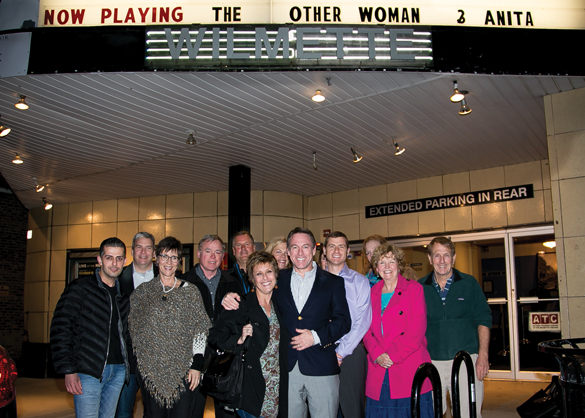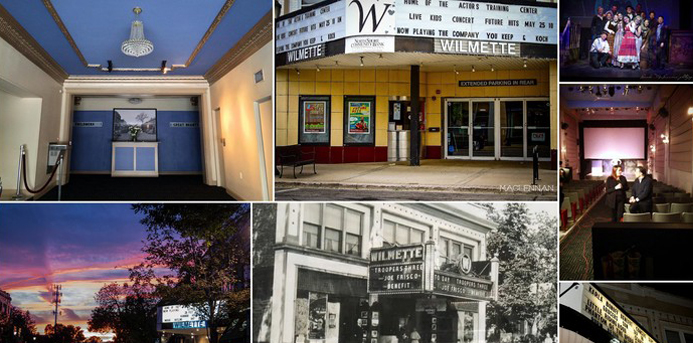The Wilmette Theatre, which celebrates its 100th anniversary this year, recently ran a highly successful Kickstarter campaign.
Their goal: to raise $70,000 to enable the purchase and installation of the digital technology necessary to convert from their present 35mm film equipment to digital. As a 501-(c)(3) nonprofit entity, they saw it as a necessary step to stay viable in the industry, and their best shot at staying in business.
At press time, they had raised over $87,000, and the project was fully funded. How did this neighborhood landmark succeed? We spoke with the Wilmette Theatre fundraising team for tips.
1. Search Kickstarter for a successful similar project and reverse engineer it.
The Wilmette Theatre used Barrington’s Catlow Theatre digital conversion project as their example and the theater’s owner as their Kickstarter mentor.
2. Video is a prerequisite for success.
Bring your mission to life with a short, compelling video.
3. Visualize your target audience.
Wilmette Theatre’s Fundraising Chair Mike Flynn identified concentric circles of support: theater supporters, the town of Wilmette, greater Chicagoland and the Kickstarter theater support network.
4. Start your campaign PR and ask for help one week before launching the campaign.
Through personal communications, posters, press releases, direct mail, a plethora of social network posts, their audience was asked to help “Save Wilmette Theatre.

Wilmette Theatre Board—Front Row (Left to Right): Lazar Esho, Laurie Carver, Carole Dibo, Jeff Freedman, David Hoffman, Wendy Sharon , Nick Noyes; Back Row (Left to Right): Mike Flynn, Terry Tierney, Brian Schinderle, Janet Koestring, Cindy Rawlings, Peggy Wagener; Not Pictured: Linda MacLennan; Picture courtesy of Linda MacLennan
5. Use your Kickstarter mentor to boost your launch.
When Wilmette’s campaign launched, Catlow Theatre immediately posted it on its website and Facebook page to push it to their patrons.
6. Keep the campaign short—no longer than 30 days. Remember that campaign timing is critical.
Push hard the first week, but don’t expect fast results. Critical mass happens the second week. Time your personal network outreach after that, to avoid a lull or plateau.
7. Don’t over ask. Align your donation request with your target audience’s reality.
The donation sweet spot for the Theatre was $100 or less, although some larger donations were received. Ultimately 670 donors gave an average of $130 through Kickstarter. Flynn believes that the campaign actually raised over $100,000 because it stimulated checks and other forms of donations too.
8. Give rewards tied to the creative effort being funded.
The Theatre gave away movie passes to all donors and a high-quality photo of the marquee to major donors.
9. Use the Kickstarter app to follow the campaign progress.
It pings with every donation. “That was over 600 pings of pure pleasure,” Flynn declares with a broad smile.
10. If at first you don’t succeed, try again.
Just learn before you do.

